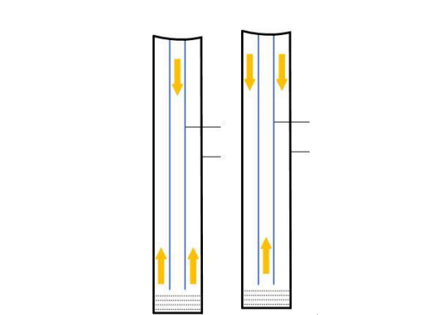Analysis of Residual Intensity of Sand Washing Wear of Coiled Tubing in Recoil Condition
During surface sand production and sand filling operations, the sand layer formed at the bottom will seriously affect the normal operation of the oil well.
Therefore, sand washing operations are urgently needed to solve this phenomenon. During the sand washing operation, the sand particles in the working fluid will cause sand washing wear on the wall of the coiled tubing, which will reduce the wall thickness of the coiled tubing, thereby reducing its strength, and may even shorten its service life and failure.
Therefore, it is necessary to analyze the remaining strength of the inner wall of the coiled tubing for sand-washing wear under recoil conditions.
In this chapter, by establishing a finite element analysis model for coiled tubing recoil operations, the influence of sensitive factors such as sand mass flow rate, sand particle size, and sand content ratio on the sand washing rate of the inner wall of coiled tubing is analyzed; then, the sand washing rate and wall thickness are analyzed Finally, the uniform wear model is used to analyze the influence of sensitive factors such as sand mass flow rate, sand particle size, and sand content ratio on the remaining strength of sand washing wear on the inner wall of coiled tubing.

Sand washing is a very complicated process, and the sand washing rate is not an intrinsic property, but is affected by various internal and external factors.
The research shows that the three factors of sand mass flow rate, sand particle size and sand content ratio have a great influence on the sand washing wear of coiled tubing.
Since most of the existing studies have analyzed the influence of different sensitivity factors on the pipeline erosion rate, the goal of this paper is to study the residual strength of the inner wall of the coiled tubing after sand washing under the condition of recoil.
Therefore, it is necessary to establish the relationship between sand washing rate and wall thickness loss, and then analyze the influence of the above-mentioned different sensitivity factors on its residual strength.
At present, there are mainly two types of coiled tubing sand washing as shown in Fig. 3-1. It can be seen from the figure that back flushing refers to injecting the sand washing fluid from the annular space between the coiled tubing and the casing, and then returning the sand washing fluid and sand particles upward from the coiled tubing.
The injection position and discharge position of positive circulation sand flushing are just opposite to those of recoil flushing.
Forward flushing has weak sand-carrying force, slow upward return speed, and is easy to get stuck in the column.
The pumping pressure and displacement required for recoil flushing are less, thus overcoming the problem of sand accumulation.
Combined with the actual use of the oil field, the sand washing model in this paper chooses recoil.

The increase of the mass flow rate means that the number of sand particles in the sand washing fluid per unit volume increases.
When the volume of a single sand particle remains unchanged, the number of sand particles increases, which will cause a sharp increase in the number of sand particles hitting the inner wall of the coiled tubing per unit time, which in turn makes the inner wall of the coiled tubing Sand washing wear is more serious.
However, it can be seen from the formula (3-8) that the average wall thickness loss of the inner wall is not only related to the mass flow rate, so it will first increase and then decrease. However, the remaining strength is related to the loss of wall thickness, so it will decrease first and then increase slowly.

With the increase of sand particle size, the coiled tubing sand washing rate and the average wall thickness loss of the inner wall generally increase, and the coiled tubing sand washing wear residual strength generally decreases.
When the diameter of sand grains is 0.05-0.15 mm, the maximum sand washing wear rate and the average wall thickness loss of the inner wall increase with the increase of sand grain diameter, while the residual internal compressive strength and residual compressive strength decrease with the increase of sand grain diameter ;
when the sand grain diameter is 0.15~0.2mm, the maximum sand washing wear rate and the average wall thickness loss of the coiled tubing decrease with the increase of the sand grain diameter, showing a decrease instead of an increase, and the residual internal pressure strength and residual crush strength It increases with the increase of the sand grain diameter, showing an increase instead of decrease;
when the sand grain diameter is 0.2mm~0.25mm, the maximum sand washing wear rate and the average thickness loss of the inner wall of the coiled tubing increase with the increase of the sand grain diameter, and the remaining The internal compressive strength and residual crushing strength decrease with the increase of sand grain diameter.

When the particle size is 0.15mm~0.2mm, the phenomenon that the maximum sand washing wear rate decreases is explained as follows: when the particle size of the sand particles increases to a certain extent, the energy loss caused by the collision of the sand particles is much greater than that of the impact on the wall.
Some sand particles still remain on the coiled tubing wall after the impact.

 By Sun
By Sun

